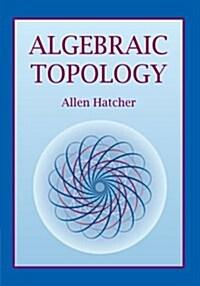책 이미지

책 정보
· 분류 : 외국도서 > 기술공학 > 기술공학 > 재료과학
· ISBN : 9780470030431
· 쪽수 : 302쪽
· 출판일 : 2009-06-01
목차
Preface.
List of Boxed Examples.
1 Panta Rei: Everything Flows.
1.1 Historical Perspective.
1.2 What Lies Ahead?
1.3 How Nature Uses RD.
1.3.1 Animate Systems.
1.3.2 Inanimate Systems.
1.4 RD in Science and Technology.
References.
2 Basic Ingredients: Diffusion.
2.1 Diffusion Equation.
2.2 Solving Diffusion Equations.
2.2.1 Separation of Variables.
2.2.2 Laplace Transforms.
2.3 The Use of Symmetry and Superposition.
2.4 Cylindrical and Spherical Coordinates.
2.5 Advanced Topics.
References.
3 Chemical Reactions.
3.1 Reactions and Rates.
3.2 Chemical Equilibrium.
3.3 Ionic Reactions and Solubility Products.
3.4 Autocatalysis, Cooperativity and Feedback.
3.5 Oscillating Reactions.
3.6 Reactions in Gels.
References.
4 Putting It All Together: Reaction–Diffusion Equations and the Methods of Solving Them.
4.1 General Form of Reaction–Diffusion Equations.
4.2 RD Equations that can be Solved Analytically.
4.3 Spatial Discretization.
4.3.1 Finite Difference Methods.
4.3.2 Finite Element Methods.
4.4 Temporal Discretization and Integration.
4.4.1 Case 1: τRxn ≥ τDiff.
4.4.1.1 Forward Time Centered Space (FTCS) Differencing.
4.4.1.2 Backward Time Centered Space (BTCS) Differencing.
4.4.1.3 Crank–Nicholson Method.
4.4.1.4 Alternating Direction Implicit Method in Two and Three Dimensions.
4.4.2 Case 2: τRxn ≪ τDiff.
4.4.2.1 Operator Splitting Method.
4.4.2.2 Method of Lines.
4.4.3 Dealing with Precipitation Reactions.
4.5 Heuristic Rules for Selecting a Numerical Method.
4.6 Mesoscopic Models.
References.
5 Spatial Control of Reaction–Diffusion at Small Scales: Wet Stamping (WETS).
5.1 Choice of Gels.
5.2 Fabrication.
Appendix 5A: Practical Guide to Making Agarose Stamps.
5A.1 PDMS Molding.
5A.2 Agarose Molding.
References.
6 Fabrication by Reaction–Diffusion: Curvilinear Microstructures for Optics and Fluidics.
6.1 Microfabrication: The Simple and the Difficult.
6.2 Fabricating Arrays of Microlenses by RD and WETS.
6.3 Intermezzo: Some Thoughts on Rational Design.
6.4 Guiding Microlens Fabrication by Lattice Gas Modeling.
6.5 Disjoint Features and Microfabrication of Multilevel Structures.
6.6 Microfabrication of Microfluidic Devices.
6.7 Short Summary.
References.
7 Multitasking: Micro- and Nanofabrication with Periodic Precipitation.
7.1 Periodic Precipitation.
7.2 Phenomenology of Periodic Precipitation.
7.3 Governing Equations.
7.4 Microscopic PP Patterns in Two Dimensions.
7.4.1 Feature Dimensions and Spacing.
7.4.2 Gel Thickness.
7.4.3 Degree of Gel Crosslinking.
7.4.4 Concentration of the Outer and Inner Electrolytes.
7.5 Two-Dimensional Patterns for Diffractive Optics.
7.6 Buckling into the Third Dimension: Periodic ‘Nanowrinkles’.
7.7 Toward the Applications of Buckled Surfaces.
7.8 Parallel Reactions and the Nanoscale.
References.
8 Reaction–Diffusion at Interfaces: Structuring Solid Materials.
8.1 Deposition of Metal Foils at Gel Interfaces.
8.1.1 RD in the Plating Solution: Film Topography.
8.1.2 RD in the Gel Substrates: Film Roughness.
8.2 Cutting into Hard Solids with Soft Gels.
8.2.1 Etching Equations.
8.2.1.1 Gold Etching.
8.2.1.2 Glass and Silicon Etching.
8.2.2 Structuring Metal Films.
8.2.3 Microetching Transparent Conductive Oxides, Semiconductors and Crystals.
8.2.4 Imprinting Functional Architectures into Glass.
8.3 The Take-Home Message.
References.
9 Micro-chameleons: Reaction–Diffusion for Amplification and Sensing.
9.1 Amplification of Material Properties by RD Micronetworks.
9.2 Amplifying Macromolecular Changes using Low-Symmetry Networks.
9.3 Detecting Molecular Monolayers.
9.4 Sensing Chemical ‘Food'.
9.4.1 Oscillatory Kinetics.
9.4.2 Diffusive Coupling.
9.4.3 Wave Emission and Mode Switching.
9.5 Extensions: New Chemistries, Applications and Measurements.
References.
10 Reaction–Diffusion in Three Dimensions and at the Nanoscale.
10.1 Fabrication Inside Porous Particles.
10.1.1 Making Spheres Inside of Cubes.
10.1.2 Modeling of 3D RD.
10.1.3 Fabrication Inside of Complex-Shape Particles.
10.1.4 ‘Remote’ Exchange of the Cores.
10.1.5 Self-Assembly of Open-Lattice Crystals.
10.2 Diffusion in Solids: The Kirkendall Effect and Fabrication of Core–Shell Nanoparticles.
10.3 Galvanic Replacement and De-Alloying Reactions at the Nanoscale: Synthesis of Nanocages.
References.
11 Epilogue: Challenges and Opportunities for the Future.
References.
Appendix A: Nature’s Art.
Appendix B: Matlab Code for the Minotaur (Example 4.1).
Appendix C: C++ Code for the Zebra (Example 4.3).
Index.





















![[eBook Code] Chemistry in Motion (eBook Code, 1st)](/img_thumb2/9780470741634.jpg)




